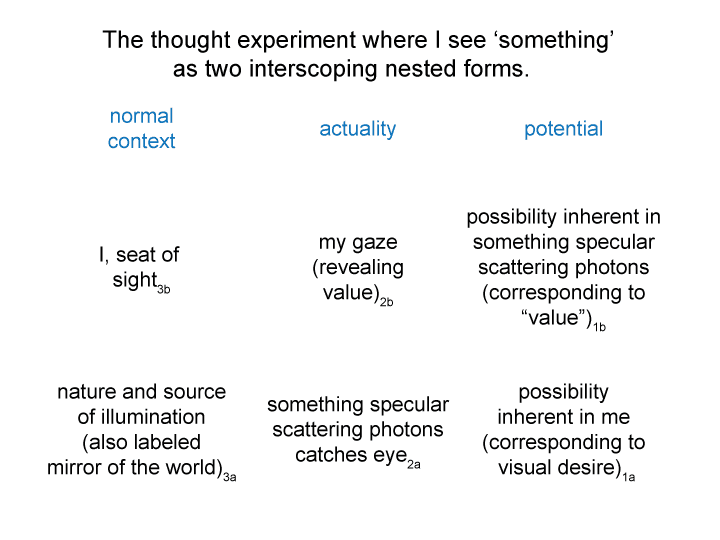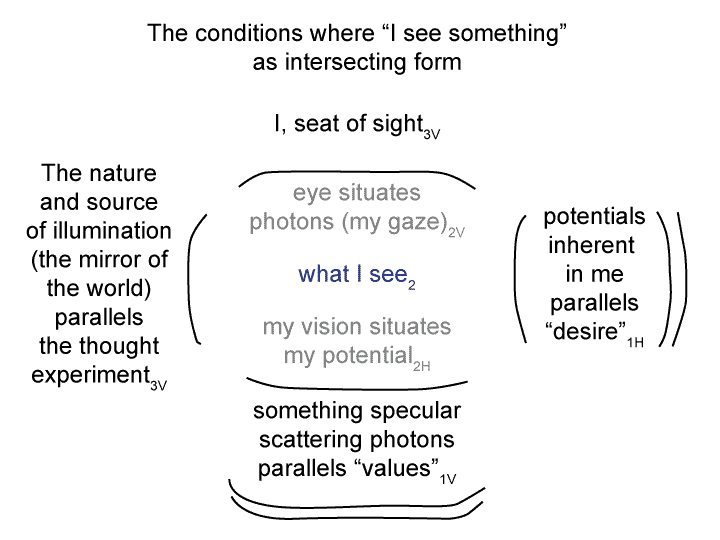[In the original interscope, a content-level ‘something2a emerges from and situates the potentials inherent in me1a. Then, a situation-level my choice2b emerges from and situates the potentials inherent in ‘something2a‘1b.
What happens when there are no disconnects?
Then, ‘something’ underlying my choice1b virtually emerges from and situates the potentials inherent in me1a.
It does so by identifying the something underlying my choice1b as the something that emerges from and situates the potentials inherent in me2a.
In short, when there is no disconnect, values1b virtually emerge from and situate desires1a.]


